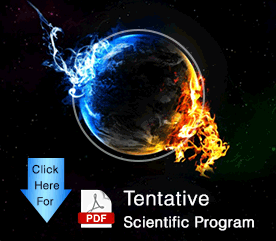Kouichi Matsumoto
Kindai University, Japan
Title: Synthesis of fluorinated bicyclic molecule via Prins cyclization using electro-generated acid
Biography
Biography: Kouichi Matsumoto
Abstract
Prins cyclization using simple aldehydes and homoallylic alcohols in the presence of acid reagents is well known to form functionalized tetrahydropyrans, and the reactions have been extensively studied so far. Because tetrahydropyrans are important and interesting unit in bioactive molecules, a new synthetic development in this field has been still required. In the view point of integration of Prins cyclization, some interesting reactions have been reported. For example, sequential Sakurai-Prins-Ritter reactions are developed by Rovis, T. et al. This reaction involves Prins cyclization in the latter stage. Tandem Prins/Friedel-Crafts cyclization has recently been reported by Yadav, J. S. et al, in which the generated carbocation by Prins cyclization was trapped by aromatic ring to form heterotricycles. However, to the best of our knowledge, there is no report of tandem Prins/cationic cyclization using aldehyde and non-conjugated diene alcohol as integrated Prins cyclization. We have recently reported that the electrochemical oxidation of the solution of aldehydes and homoallylic alcohols in Bu4NBF4/CH2Cl2 afforded the corresponding fluorinated tetrahydrofurans via Prins cyclization. During the course of our study, we found that this type of cyclization reaction could be extended to tandem Prins/ cationic cyclization (Scheme 1). The electrochemical oxidation of octanal (R = C7H15-) and (E)-4,7-octadiene-1-ol in Bu4NBF4/CH2Cl2 at -40 oC in divided cell gave the corresponding fluorinated bicyclic compound in 73% yield. The same reactions were also found to be promoted by Lewis acids. In the presentation, the detail of the reactions including optimization, scope and limitations, and mechanism will be discussed.

